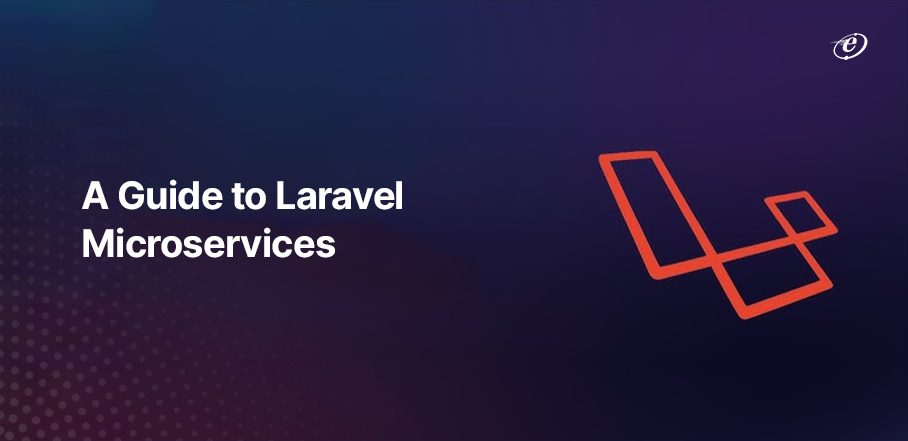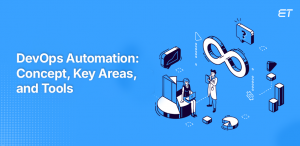“Laravel is the strongest contender in the PHP ecosystem simply because it includes the features needed to build modern web applications.” – Taylor Otwell, CEO, Laravel.
The creator of Laravel is not boasting of the framework’s capabilities. In fact, learning Laravel microservices makes sense for practical purposes. This technology generates an annual revenue of USD 5.7 million. So, this statistic is a testament to the framework’s high utility.
You can explore various microservices in PHP. However, Laravel modular app development will seem more interesting. Why? Well, there are many reasons.
In this blog, you can unravel the basics of microservices in Laravel. So, scroll below and expand your knowledge of this popular PHP framework.
Laravel Microservices: The Fundamentals
Before learning the concept of microservices in Laravel, you should be aware of the two interconnected terms:
- Laravel
- Microservices
Once you understand the fundamental aspects of the two topics, leveraging Laravel microservices becomes a straightforward task.
What is the Laravel Framework?
Laravel is a PHP backend framework. It is free, open-source, and easy to use.
Some of the notable features of this framework are:
- Artisan CLI
- MVC Architecture
- Native authentication
- Blade template engine
Dedicated Laravel developers can utilize various microservices in PHP. However, the Laravel API gateway enables these professionals to profit from multiple apparent benefits.
Some main advantages of using the Laravel framework include:
| Highly scalable framework | Quick development pace | Easy-to-understand syntax |
| Robust authentication | Extensive library | Good documentation |
What are Microservices?
As the name suggests, microservices are an approach to structuring web applications into small independent units.
Generally, a microservice is an architecture style in which an app runs on the basis of separate components. Different teams or units connect these services through APIs.
Here are some of the main characteristics of microservices in PHP:
- Autonomy: Each service is independent of the other, and developers can modify them without affecting the overall functioning
- Specialization: Microservices focus on solving specific problems and exceptional cases. Also, dedicated developers can break an intricate component into small pieces
- Reusability: Teams can use sub-modules of microservices for different purposes. So, there is no need to write a code from scratch
- Scalability: Programmers can scale microservices independently. So, these individual components can support web apps that modify with time
Laravel microservices is an architecture that hovers around the popular PHP framework. So, studying this approach can enhance your Laravel development cycle.
Understanding Laravel Microservices
You can develop a program, software, or application using Laravel microservices. Once you implement this approach, you can build separate sections in a single program.
This style of web development is different than monolithic architecture. This approach allows you to create Laravel modular apps with small building blocks. Microservices in Laravel communicate through APIs like REST.
Why Choose Laravel Microservices?
Leveraging microservices in PHP and Laravel is advantageous on many fronts. Here are some of the main points that you should consider:
- You can allocate resources as per requirement by utilizing Laravel microservices
- The speed of the development cycle improves as teams can work on different components separately
- It is easy to update microservices in Laravel as they are smaller in size
- The chances of an entire system’s failure are low
- It is possible to adopt new technologies and tools easily due to the simplified application of Laravel microservices
- You can lower infrastructure costs as microservices are modifiable in distinct capacities
Overall, choosing microservices in Laravel can prove to be a highly beneficial decision. If you do not have proper knowledge of its implementation, consider hiring dedicated Laravel developers for the best output.
Benefits of Implementing Laravel Microservices
Can choosing a Laravel API gateway for implementing microservices prove advantageous to your development cycle?
In a word, yes. There are many positives to selecting Laravel microservices. This section addresses each benefit in brief.
1. Independent Deployment
Different teams can deploy Laravel microservices independently. This possibility improves development speed and upgrade quality.
Let us understand this advantage of microservices in Laravel through a hypothetical example:
You develop an application that has ten different modules. However, instead of bundling all modules in a single pack, you implement Laravel microservices. Now, dedicated teams can access and deploy any module as per requirement.
Consider Module 3 deals with the payment gateway of your web application. Instead of modifying the entire code of the Laravel app, developers can work on Microservice 3 and improve the payment gateway functionality.
Long story short, independent deployment simplifies the development process.
2. High Compatibility
One of the best benefits of microservices in Laravel is the compatibility of this approach with various programming languages.
So, even if you hire developers with limited programming language knowledge, it is okay. Programmers can build Laravel microservices by using any language.
The only vital choice in such a scenario is the utility of REST or RPC protocols. Consistent API execution is necessary for other services to maintain consistency.
3. Productivity Improvement
Ask yourself a simple question – is it easier to manage an application with small sections handling specific functions?
Obviously, your answer will be affirmative. Laravel microservices enable such a rise in productivity. Instead of managing an entire application, developers can split various activities and improve efficiency.
4. Enhancement of Business Operations
It is possible to refine your business operations when the tasks are well-segregated. Microservices in PHP offer the same advantage.
Your team can complete modifications on individual services quickly. As a result, it is easier to focus attention on other activities. In addition, the ability to change existing services without hampering the master code enables improvement in business operations.
When Should You Choose Laravel Microservices?
This question is vital for budding developers as well as seasoned Laravel programmers. It is not wise to implement microservices in Laravel for every project. Why?
Here are some practical points:
- Each component requires distinct updates and releases
- Proper technical knowledge of microservices is essential
- Traditional logging becomes inefficient
- Some projects can become complex
So, choosing microservices in Laravel becomes a crucial decision.
Here are some of the scenarios that can require implementation of this architectural approach:
- You want to fragment monolithic architecture apps
- The app needs to adapt to rapid changes
- A web app receives high traffic, thereby increasing the load
- You want to integrate third-party or external services
Overall, adopting the microservice approach requires proper execution and implementation. So, choosing skilled Laravel developers is critical to getting things going.
Note: Choosing a proven backend framework is critical to achieving success in microservices execution. Laravel 10 is the latest version of this PHP framework. You can check all the details of this release in this informative blog.
Steps to Build Microservices in Laravel
You can follow different approaches to build microservices. This section contains one such process. Feel free to implement the steps and create your customized Laravel microservices architecture.
1. Create a New Lumen Project
Lumen is a micro-framework with specific utility in developing microservices in Laravel. You can use Composer to create a new Lumen project in the first step.
Here’s a command example: composer create-project –prefer-dist laravel/lumen blog-api
2. Configure the Database Credentials
You need to configure the connection details in a .env file. This step enables Laravel microservices to connect with the database.
Here’s a standard example of the relevant command:
| DB_CONNECTION=mysql DB_HOST=127.0.0.1 DB_PORT=3306 DB_DATABASE=lumen DB_USERNAME=root DB_PASSWORD= |
3. Defining Routes and Controllers
Verify that your routing works appropriately. Dedicated Laravel developers can insert suitable commands for this purpose.
Furthermore, you can use Artisan to define the API logic. Generate a PostController using the PHP Artisan console.
4. Developing Models and Migrations
In the subsequent stages of building Laravel microservices, you must create a post-model. Generate the model in the namespace using a suitable command.
Creating the required database table is crucial for developing a robust microservice architecture. So, run migrations in this stage using a command like php artisan make: migration create_posts_table.
5. Seeding and Testing
You require data for implementing microservices successfully. Use the Artisan console to populate sample data.
In the final stage, dedicated Laravel developers can run tests to check the functioning of the microservices.
In a Nutshell
Laravel is a popular framework due to several reasons. It is quick, easy to use, suitable for handling high web traffic, and flexible. So, skilled developers explore various facets of this framework to enhance their development projects.
Laravel microservices is one such approach. This unique architectural style implies breaking a large app into small segments or components. Implementing microservices in Laravel leads to benefits like high compatibility, productivity improvement, business operations refinement, and simple deployment.
However, proper selection of microservices in PHP or Laravel is crucial for the success of your development cycle. So, you can gather technical knowledge on microservices and Laravel modular apps by referring to various resources.
On the contrary, contacting our dedicated Laravel developers can also be beneficial. We offer seamless services and consultation on such intriguing development topics.
Frequently Asked Questions
What is the difference between Laravel microservices and the monolith approach?
In microservices, developers build a web application using small individual components. On the other hand, the monolith approach comprises developing a Laravel app as a single unit.
Can I use Laravel to build API?
In a word, yes. Laravel is highly capable of creating RESTful APIs for several reasons. It is easy to learn, has Eloquent ORM, and a vibrant community of skilled developers. You can also refer to the useful Laravel documentation in case of doubts regarding the Laravel API gateway.
What are some server suggestions for developing microservices?
You can use servers like Spring Boot, Micronaut, Molecular, GoMicro, and others as frameworks to build Laravel microservices. So, build Laravel modular apps using this approach and notice the difference.
Excellence-driven professional with 15+ years of experience in increasing productivity, and revenue, while effectively managing products of all sizes. He has worked for international clients in the US, UK, and Singapore and local companies in various domains. With excellent attention to detail and a methodical approach to execution, he is an expert in bringing projects to a successful stage. He follows James Humes’s famous saying- “The art of communication is the language of leadership.”















